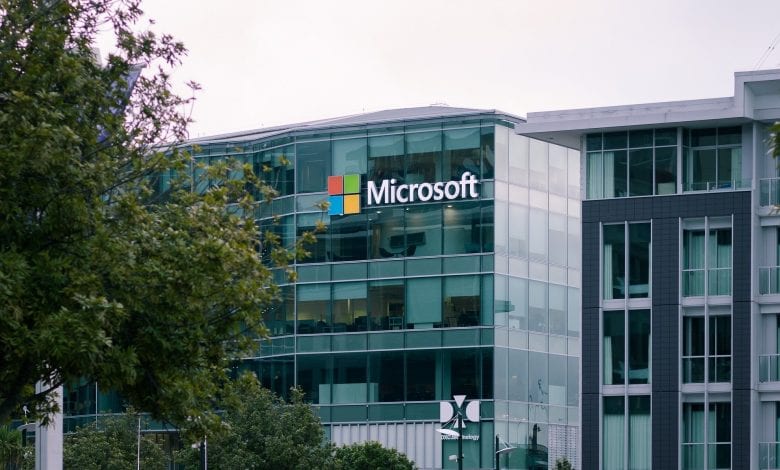
Microsoft delivered strong financial results that exceeded expectations, driven by the rapid adoption and “diffusion” of AI technology across its business. AI is now being integrated into a wide range of applications and platforms, at a much faster rate than previous technology shifts. The company described this aggressive growth as the start of a new, massive “S-curve,” which is expected to compound over time to sustain long-term growth.
| Q4 2024 (US$ million) | Q4 2025 (US$ million) | Percentage change | |
| Revenue | 64,727 | 76,441 | +18.1% |
| Productivity and Business Processes | 28,627 | 33,112 | +15.7% |
| Intelligent Cloud | 23,785 | 29,878 | +25.6% |
| More Personal Computing | 12,315 | 13,451 | +9.2% |
| Operating income | 27,925 | 34,323 | +22.9% |
| Net income | 22,036 | 27,233 | +23.6% |
The year-on-year growth in overall revenue was mainly driven by Azure and Microsoft 365. About 98% of the revenue was recurring and subscription-based (annuity mix).
The revenue growth from the Productivity and Business Processes segment was driven by Microsoft 365 products and cloud services. The Intelligent Cloud segment is the fastest-growing segment, led by growth in Azure and other cloud services.
Microsoft’s investment in AI is a key driver of this growth. The company’s AI product features are now used by over 800 million monthly active users, with its family of Copilot apps exceeding 100 million users.
To meet soaring demand for cloud and AI, Microsoft’s capital expenditures were US$24.2 billion this quarter and are projected to reach US$30 billion in Q1 2026. Majority of the capital expenditure was spent on long-lived assets that support long-term monetisation, while the rest was primarily on servers, CPUs, and GPUs.
Despite this massive spending, demand for services is still outstripping capacity, as evidenced by a 35% increase in contracted backlog to US$368 billion, with 35% of that expected to be recognised as revenue within the next twelve months. This aggressive investment in its physical data centre footprint, which now includes over 400 data centres, is a deliberate strategy to gain market share. The growth in capital expenditure in 2026 is expected to moderate year-on-year.
The heavy capital investment had a predictable impact on profitability, with gross margin decreasing from 69.6% in Q4 2024 to 68.6% in Q4 2025 due to the capital-intensive, lower-margin nature of building out AI infrastructure. However, the company expects revenue and operating income to grow at a double-digit rate in 2026, while operating margin is anticipated to remain stable.
During the quarter, Microsoft returned US$9.4 billion to shareholders through dividends and share repurchases, with the full fiscal year total exceeding US$37 billion.
Productivity and Business Processes
This segment saw higher revenue from its subscription-based services, including Microsoft 365, LinkedIn, and Dynamics. Growth was driven by an increase in average revenue per user (ARPU), particularly from the premium E5 plan and Microsoft 365 Copilot. Commercial growth for Microsoft 365 was also boosted by higher transactional sales of Office 2024 and an increase in paid seats among small and medium businesses and frontline workers. In the consumer sector, growth was fuelled by both increases in the number of subscribers and ARPU, following a price increase in January.
LinkedIn now has 1.2 billion members with 500 million monthly active users. Despite weakness in the hiring market, the platform’s revenue increased 8% year-on-year, demonstrating the value of its growing membership. LinkedIn is also leveraging AI to introduce new agents to its platform.
The 21% growth in Dynamics 365 revenue was led by growth across all workloads. Dynamics 365 gained more market shares as customers move from old software to modern, AI-powered applications.
The adoption of Copilot is accelerating, with integrations into products like Edge and Teams, as well as third-party solutions such as Copilot Studio. The standalone Copilot consumer app has also seen increased engagement. While Copilot is being introduced to all Windows 11 PCs, Microsoft’s support for Windows 10 is scheduled to end in October 2025, which is encouraging customers to upgrade.
Intelligent Cloud
The Intelligent Cloud segment saw revenue grow by 21.5% to over US$106.3 billion annually, with Azure leading the way by continuing to gain market share. This growth was fuelled by strong demand for AI, ongoing customer migrations from on-premises servers, and the scaling of new cloud-native applications.
While gross margins were impacted by the heavy investment in AI infrastructure, this was partially offset by efficiency gains within Azure. This efficiency is driven by Microsoft’s software optimisations, which allow the company to deliver 90% more tokens for the same GPU compared to a year ago.
The company’s AI platform strategy is seeing strong results. GitHub Copilot now has 20 million users, and its enterprise customers increased by 75% quarter-over-quarter. In the healthcare sector, Dragon Copilot had a successful year, using AI to document over 13 million physician-patient encounters this quarter. The company’s data and analytics platform, Fabric, is also gaining significant momentum, with revenue up 55% year-over-year.
Additionally, Azure AI Foundry, launched this year to help customers build and manage AI applications, is seeing rapid adoption, with 14,000 customers already using its agent service. Over 80% of Fortune 500 companies use the platform, and the number of API tokens served has grown more than seven times this year to over 500 trillion.
Beyond its core cloud business, Microsoft is also preparing itself for future opportunities in the quantum computing field. The company announced the world’s first operational deployment of a “level two” quantum computer in partnership with Atom Computing.
More Personal Computing
The More Personal Computing segment growth is driven by Windows OEM revenue and strong performance in Xbox content and services. This growth occurred despite elevated channel inventory. Search and news advertising revenue, excluding traffic acquisition costs, increased 20% year-on-year, boosted by higher search volume, improved revenue per search, new partnerships, and an easier comparison to the prior year.
Microsoft’s gaming revenue increased 10% year-on-year. A key highlight was Microsoft’s success as the top publisher on both Xbox and PlayStation, demonstrating a successful strategic shift from hardware to first-party content. This expanded the total addressable market for its titles, which saw strong performance from the Call of Duty and Minecraft franchises. The company has nearly 40 games in development. Xbox Game Pass revenue is nearing $5 billion, with cloud-streamed gameplay exceeding 500 million hours.
Key analyst questions
Microsoft is seeing strong growth not just from its core products, but also from a vibrant ecosystem of third-party and custom applications built on its platform. This is a key indicator of a healthy, growing platform.
The company’s monetisation strategy for AI will be a blend of per-user subscription models (for general tools like Copilot) and consumption-based pricing (for specialised services) according to CFO Amy Hood. CEO Satya Nadella explained that AI is rapidly evolving from simple chat interfaces and APIs to more sophisticated “agent-based” applications, which are creating new opportunities across all of Microsoft’s core products.
Hood also stressed that the company’s primary driver for margin improvement is not cost-cutting, but rather revenue growth from competitive products and improved efficiency across its tech stack.
Nadella emphasised that Microsoft’s key advantage in the AI market is its software expertise, which allows it to optimise hardware more effectively than competitors. He described this AI-driven growth as a “compounding S-curve” that the company is moving quickly to build on for long-term growth.
The fifth perspective
Microsoft finished the year with double-digit revenue and operating income growth. This strong performance is expected to continue into 2026, with executives forecasting sustained growth and stable operating margins despite heavy investments in AI.



